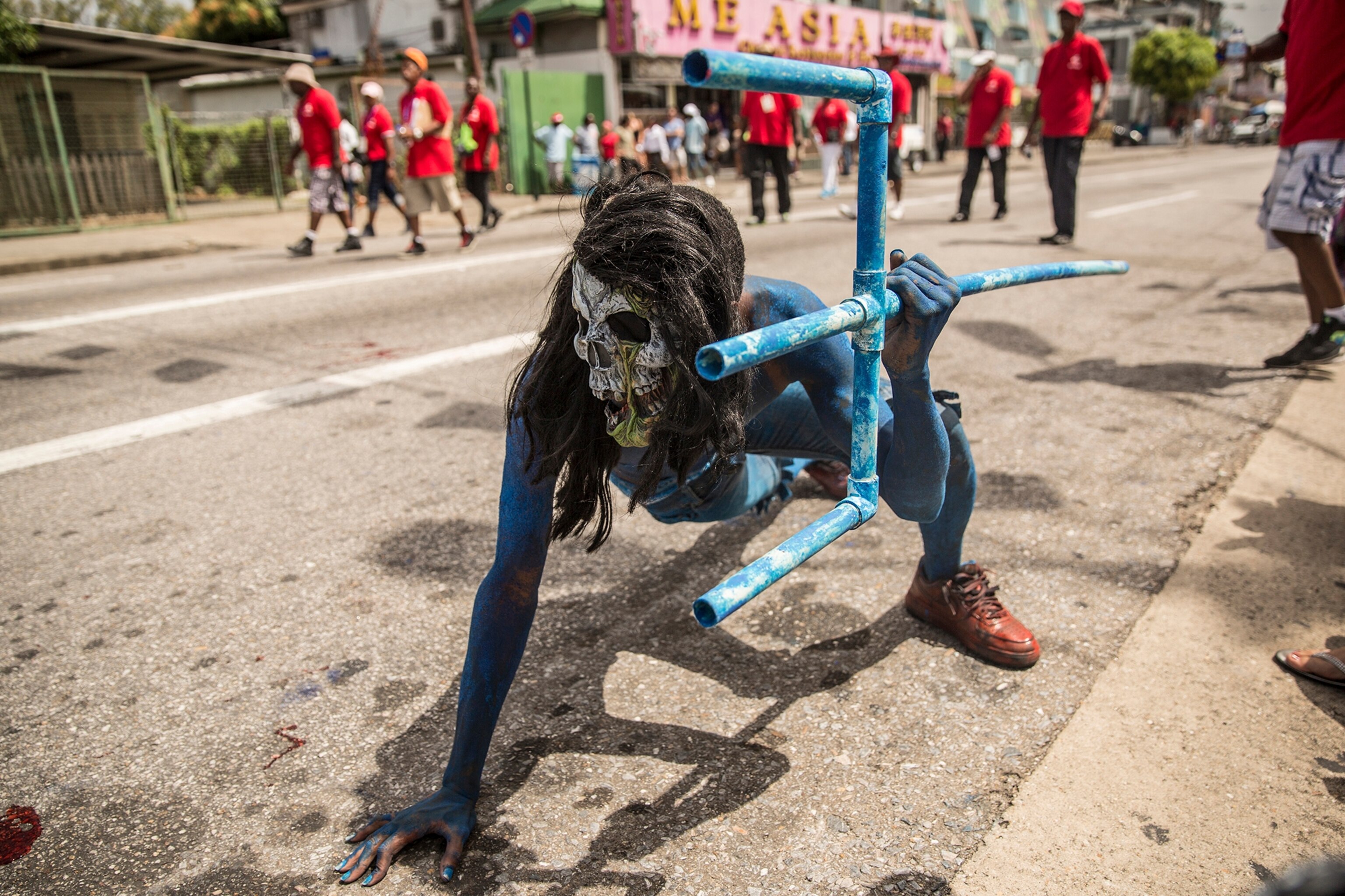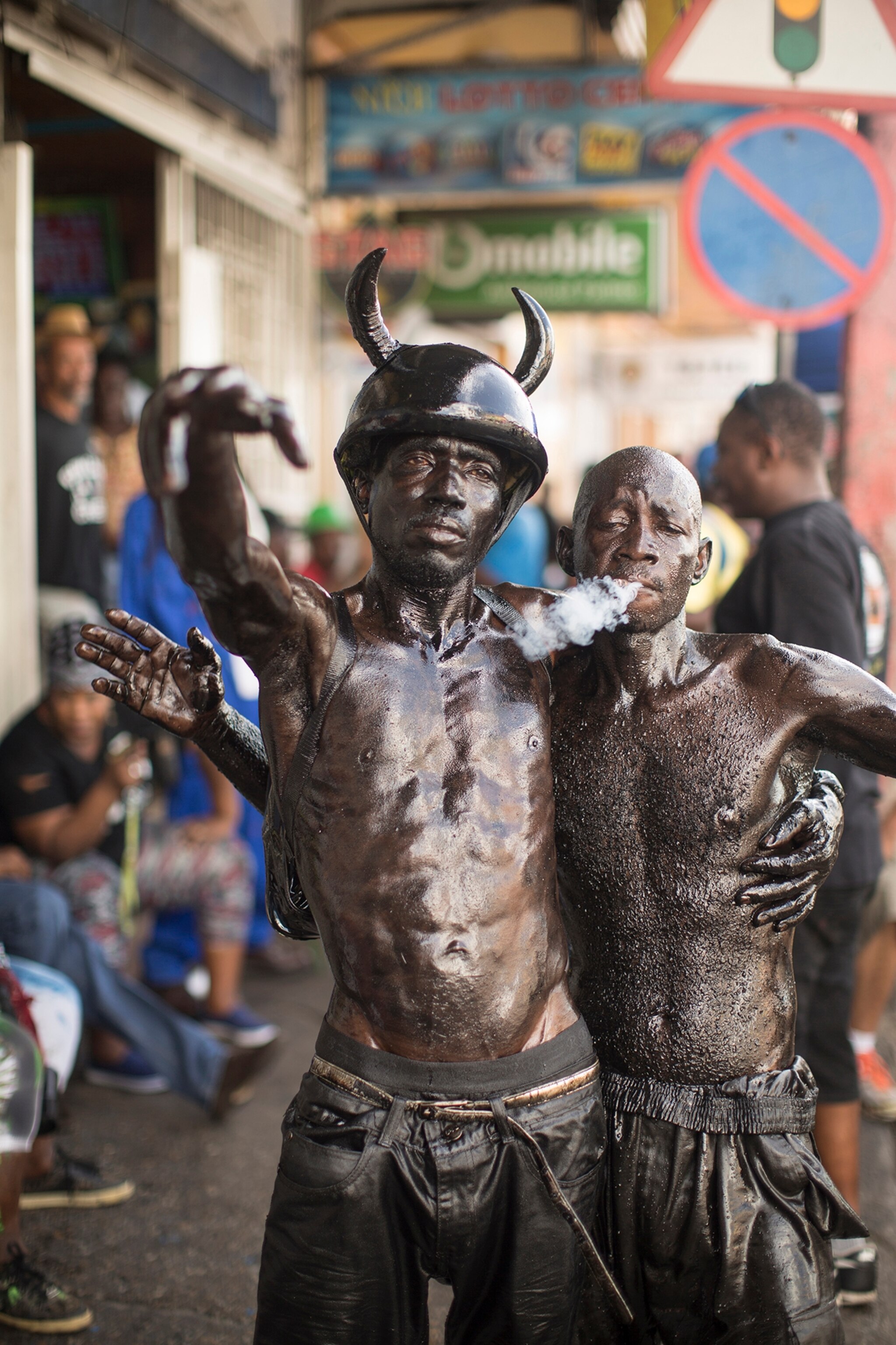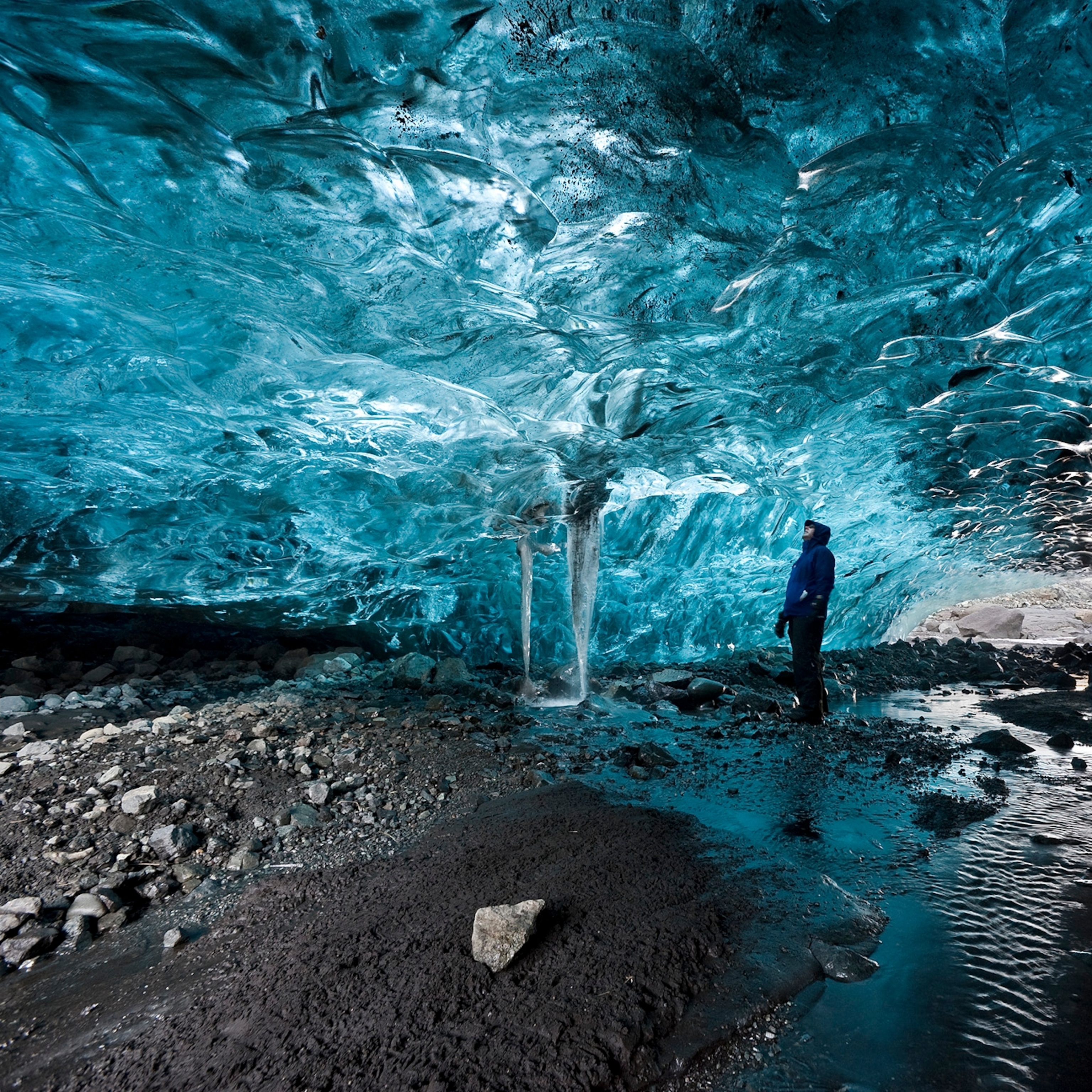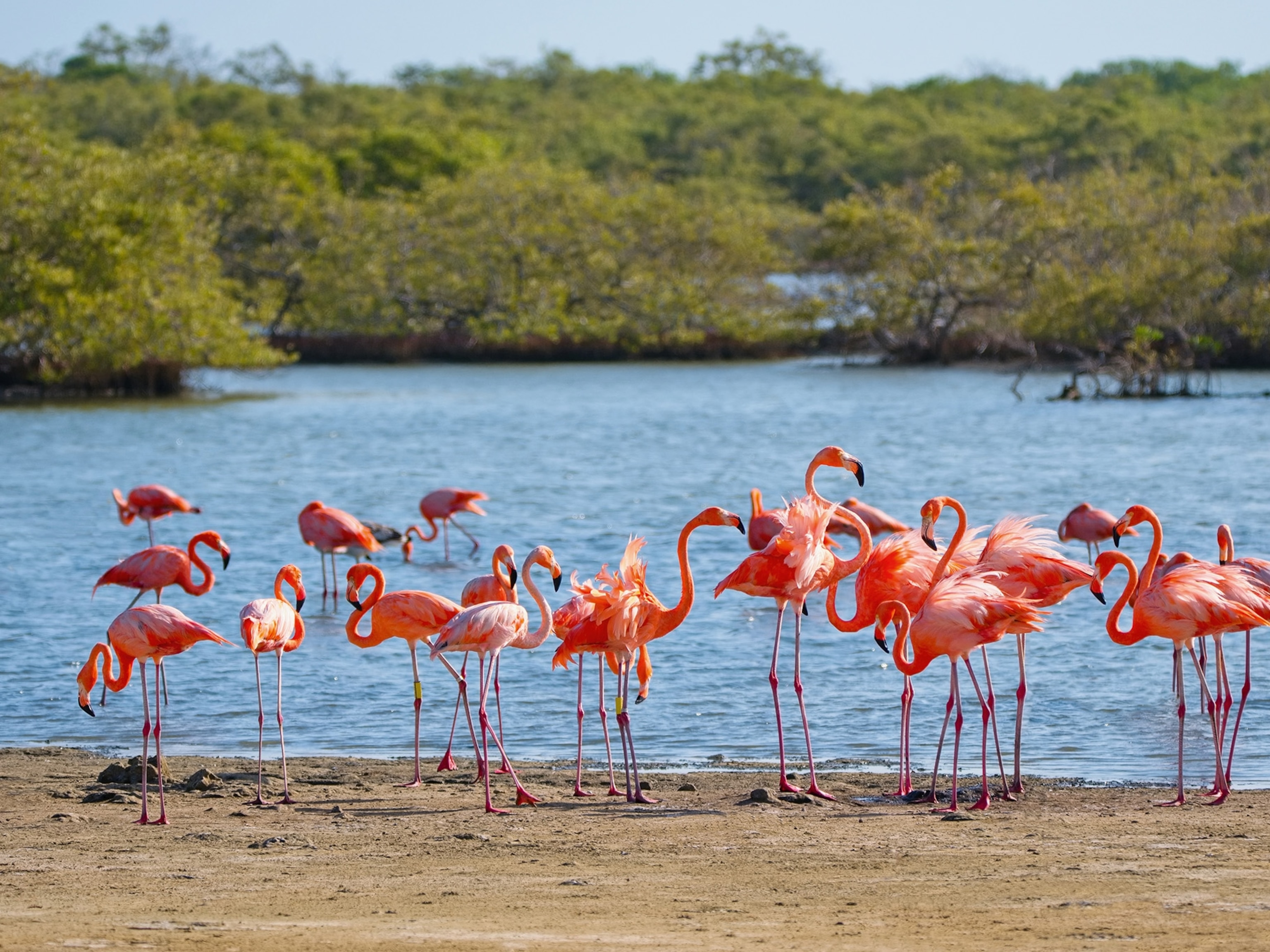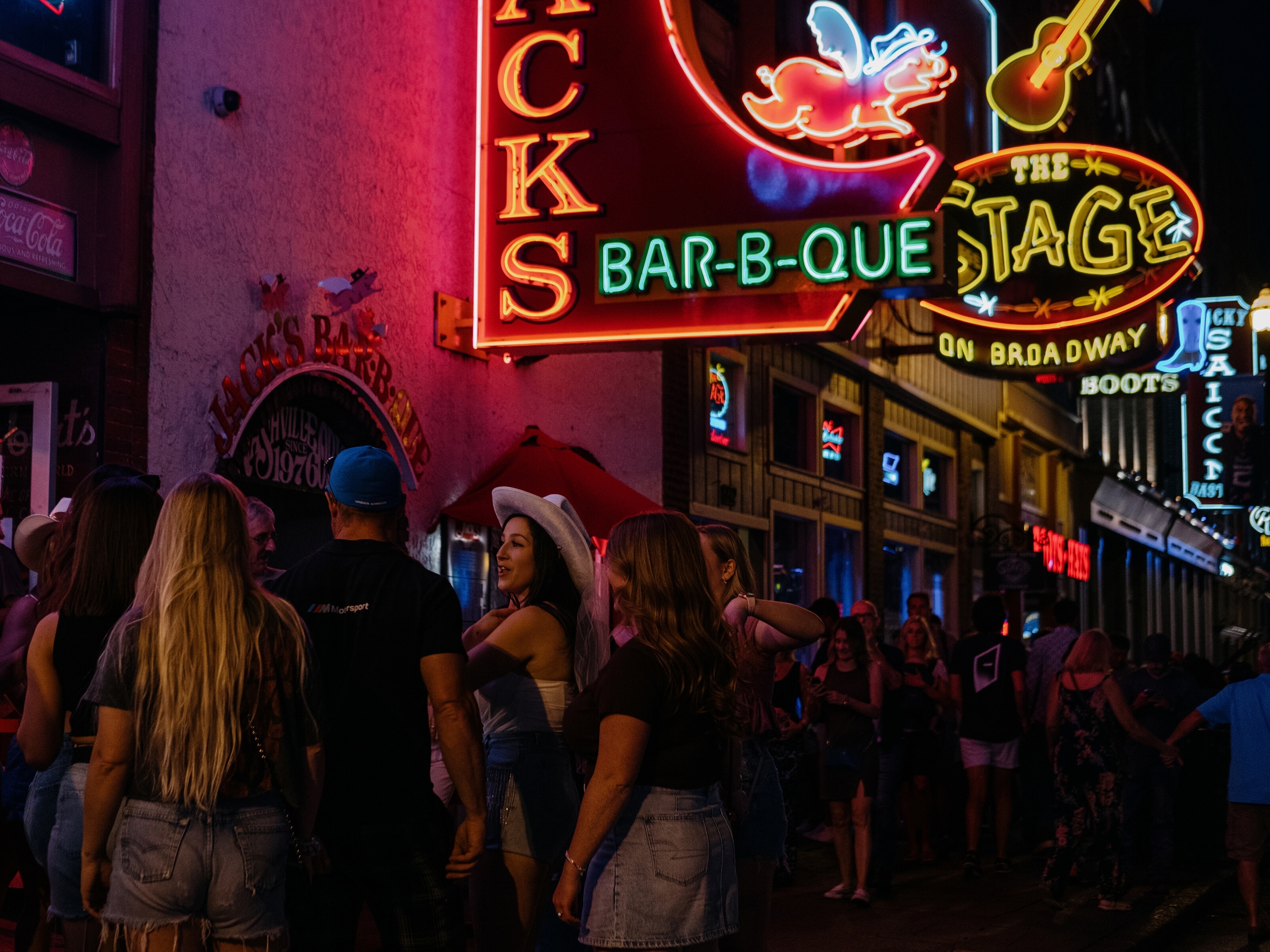Hear the Song of Trinidad
Drumming and dancing, singing birds and sound waves—this Caribbean island marches to the beat of its own steel pan.
Thundering. Clangoring. The air around me throbs and shatters with the sound of steel pans.
I'm in Queen's Park Savannah, a big patch of green in the heart of Port of Spain, capital of the island nation of Trinidad and Tobago, and I can barely move. To my right, more than a hundred musicians hunch over their pans, their hands moving in a choreographed flurry as they strike at their steel drums. To my left, 129 more play just as furiously. In front of me, yet another steel-pan orchestra makes its own riot of sound as it competes with its rivals.
We all are backstage at the finals of Trinidad’s top steel-band competition, Panorama, held the Saturday night before Carnival. Ten large bands have lined up along the paved track that leads to the Grand Stand stage. Each is jamming in a final rehearsal before the contest begins, hurtling through its competition piece. My ears try to absorb the astonishing clash of grooves and melodies, astonishing in part because the sound is earsplittingly loud without electronic amplification. It’s as if the modernist Charles Ives had composed in the Caribbean.
Many of us think of steel drums as the default sound of the Caribbean islands, a sort of aural equivalent of an umbrella drink. But this percussive instrument belongs to Trinidad: The improbable feat of turning discarded oil drums into sweetly melodic instruments was conceived in the rougher and rowdier neighborhoods of Port of Spain.
Called pan locally, the steel drum is a deceptively difficult instrument to master. Unlike the piano or, my instrument, the trombone, where notes are arranged in a line, on a pan a C isn’t next to a C sharp, it’s on the opposite side of the bowl. This both flummoxes and captivates the jazz trombonist in me. Always on the hunt for new sounds and musical ideas for my own jazz orchestra, I couldn’t wait to get to this, the world’s most intense—and joyful—showcase of pan playing.
I’m in the middle of a crush of fans who’ve come to help their favorite bands by “pushing pan.” Sets of steel drums sit on wheeled racks; fans and pannists together roll each band’s drum battery along the pavement and, eventually, up the ramp to the stage. I wedge my way through the crowd looking for bands familiar to me. I spot Phase II Pan Groove, one of the top “large” steel bands in recent years, headed by “Mozart of the pan” Len “Boogsie” Sharpe. The players, in exuberant red, yellow, and green vests and caps, show the easy confidence of front-runners.
Nearby I find the Supernovas, a young band fresh from the northern hill town of Surrey. Until last year, the Supernovas had competed only in small-band competitions. Now they’ve bulked the band up to 120 players and, in their first go at the Panorama semifinals, almost bested Phase II. It doesn’t hurt that they’re led by Amrit Samaroo, son of one of the great original pan men.
I grab a Trini-brewed Carib beer from one of the stalls that line the track and press through the fans until I can no longer move. Above, a banner proclaims “Desperadoes.” The fans right here aren’t just more plentiful, they’re more intense. As is the music. Somehow, in the tightly packed quarters, people are dancing to the fierce rhythms of the Desperadoes Steel Orchestra.
This band, affectionately known as Despers, connects right back to pan’s mean-street origins in the years around World War II, when no respectable Trinidadian parents allowed their kids to have anything to do with the instrument. As one early pan innovator, Carlton “Zigilee” Constantine, said of the bands in the 1940s and ’50s, “You must have a little villain in you” to be a pan man. Bands would fight, sometimes violently, over girls, turf, songs. Typical was this 1950 headline in the Trinidad Guardian newspaper: “Steelbands Clash; Corrosive Fluid, Cutlasses Used.”
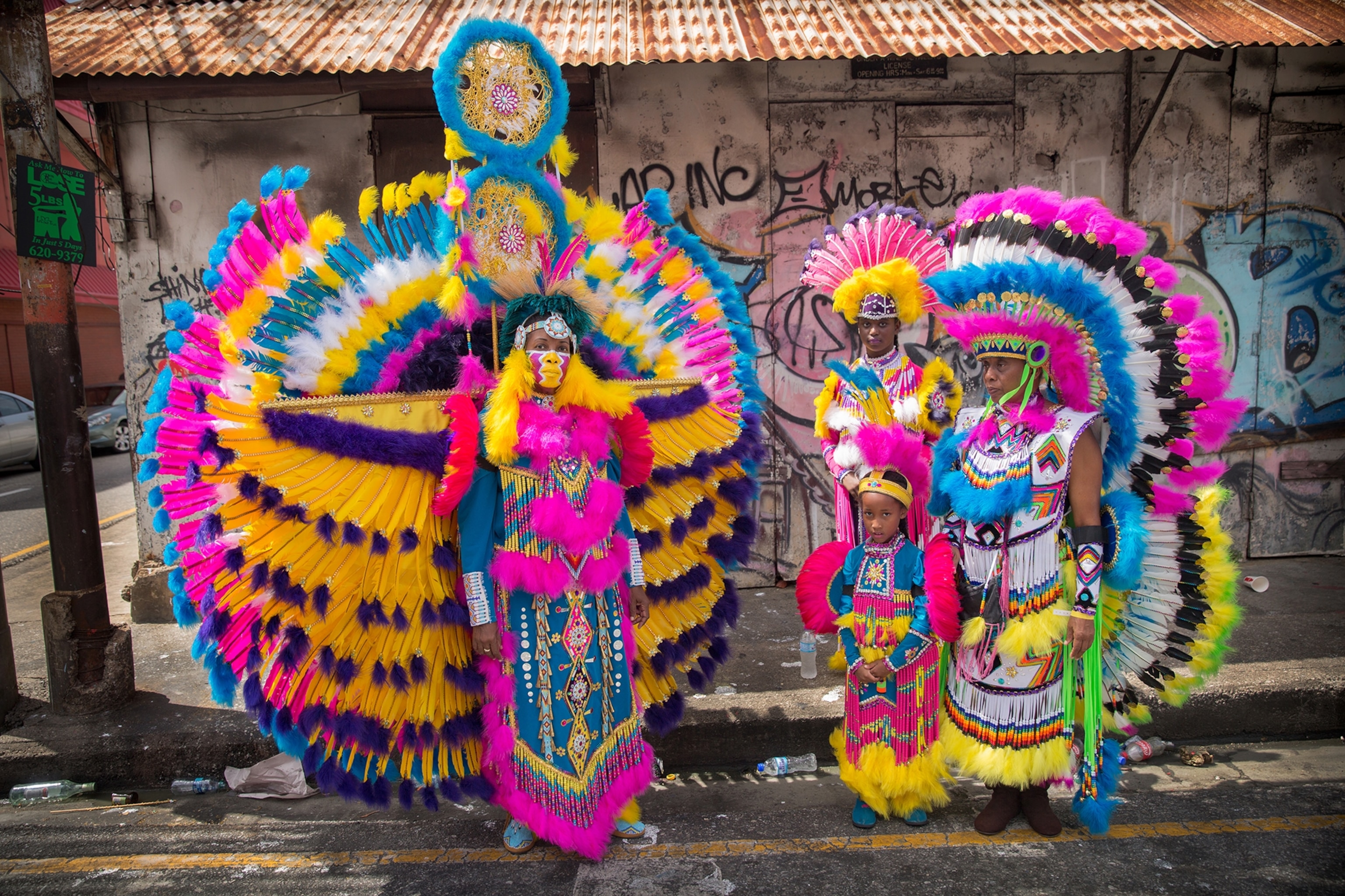
The Desperadoes formed in Laventille, a gritty neighborhood in the hardscrabble hills that overlook Port of Spain. A lingering “badjohn” reputation remains a measure of the group’s authenticity, which clearly is valued by the loyal following I see here on the track. Some say that street brawling gave rise to the Panorama competition, devised to channel any hooliganism into something more productive around the time Trinidad and Tobago achieved independence from Britain in 1962.
Not that anyone in Trinidad needs a reason to start a competition; Trinidadians will turn almost anything into a contest. Among the dozens that lead up to Carnival will be one for “Calypso King” (best calypso singer) and for “Soca King” (best singer of the island’s modern, calypso-derived pop). Trinis, as Trinidadians call themselves, even consider the singing of birds a sport—not surprising on an island that counts more than 450 bird species and honors an eight-time Calypso King named Mighty Sparrow. In a park one afternoon, I spot men hooking birdcages to stands. The bullfinches inside begin tweeting and whistling in what are known as “bullin’ sessions,” which can last the day and include no small amount of betting on which birds will sing the most.

Birdsong is both lure and reward at the 270-acre Asa Wright Nature Centre, a top Caribbean birding spot that sits high in the crease of a mountain east of Port of Spain. I barely have my bag out of the car trunk when I’m startled by some unseen fowl’s hoarse call, followed by what sounds like the klaxon honk of an old Parisian taxi. Crickets, frogs, and breeze-blown trees provide a background hum.
Perched on the hillside before me is an elegant dowager of a plantation house, white with narrow green shutters. Bird-watchers armed with binoculars and telescopic lenses flock to the veranda, which overlooks a valley lush with ferns and palms and flowering vines. A disproportionate number of the birders seem to be retired computer-science professors, but I also chat with the leader of a Canadian Bee Gees tribute band.
Guides on the veranda and along the forest trails help with bird spotting, pointing out everything from green-winged parrots (difficult to see in the foliage) to deftly darting hummingbirds. Many birds initially are identified by their song, which rallies the musician in me. I pick out the modest little whooping of the green-winged motmot (it seems embarrassed to be making any sound at all) and the squeaky chittering of thrushes. The bearded bellbird (“bearded” thanks to its throat wattles) makes a noise like a race-starter’s buzzer, followed by what sounds like the banging of a lead pipe on an old brake drum.
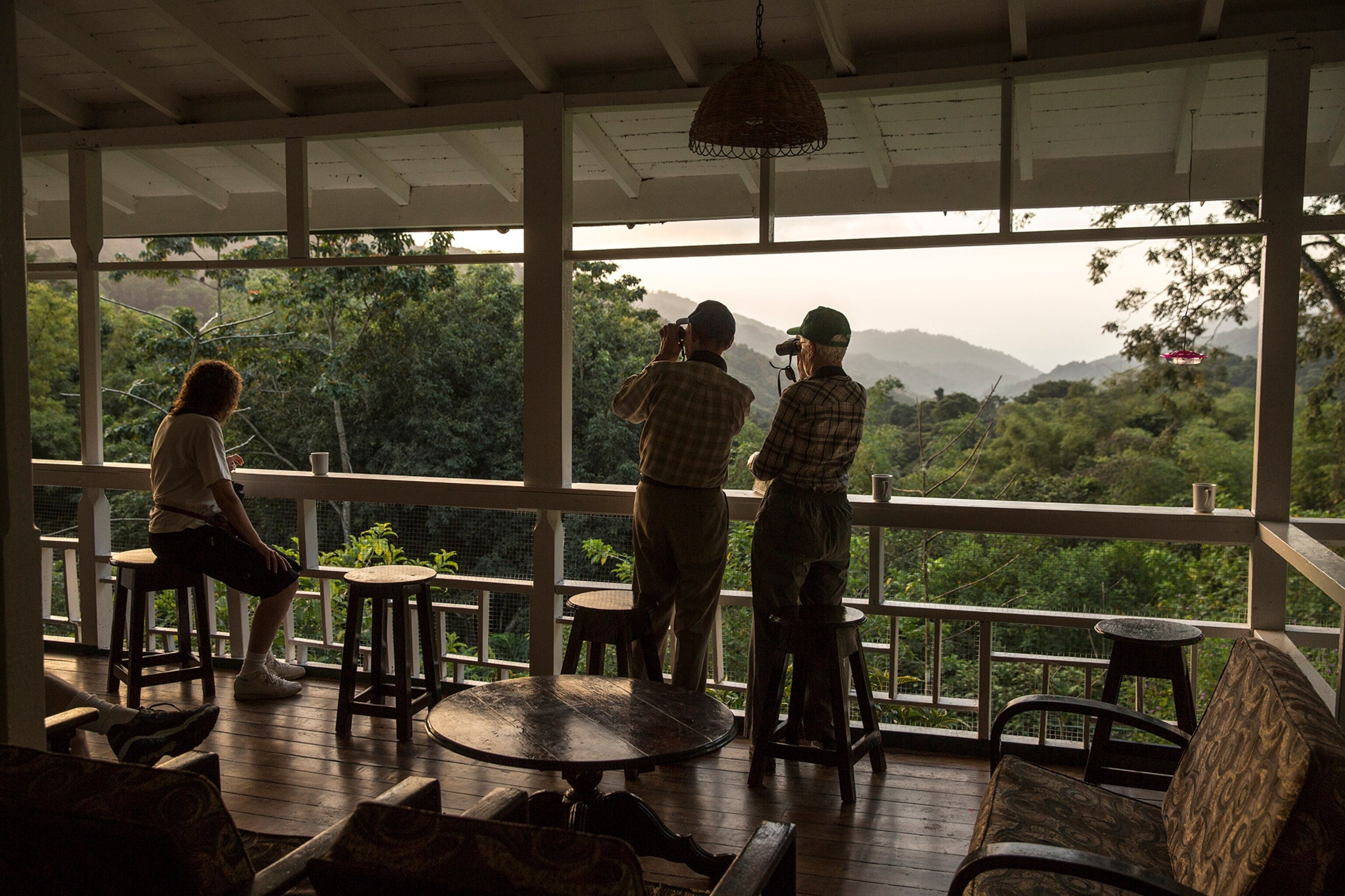
“That buzzer sound is a warning to other male bellbirds or intruders to back off,” says guide Caleb Walker, “while the clanking is a come-hither call.” The green-backed trogon alternates a mewling whistle with the toot-tooting of a third-grader taking up the recorder. But to my ears, the best of all will be the extravagant call of the yellow-tailed crested oropendola, a song that starts with the roll of a toy snare drum and surges into a comical calliope arpeggio.
Midway into this new game of mine I discover birds I’d much rather see than hear. Topping the list is the scarlet ibis, Trinidad’s national bird, which visits Asa Wright but congregates in the Caroni Swamp, an estuarine reserve south of Port of Spain that will be my next stop. First impressions underwhelm: Hard by a highway exit I find a dirt parking lot and a small dock where a jumble of boats with bench seats moor in a canal. One boat is inviting passengers, so I board and we head out. Within minutes the canal gives way to mangrove-cloistered estuaries that open onto a string of serene tidal lakes. As the late-afternoon sky eases from blue to dusky mauve, clusters of scarlet ibises (more like electric-crimson ibises, so intense is their red-pink hue) swoop in low and fast over the water and, in a flurry of flapping, pull up to roost in the mangroves. There are so many of them, thousands, that their red feathers against the green foliage make the trees look like giant pyracantha bushes.
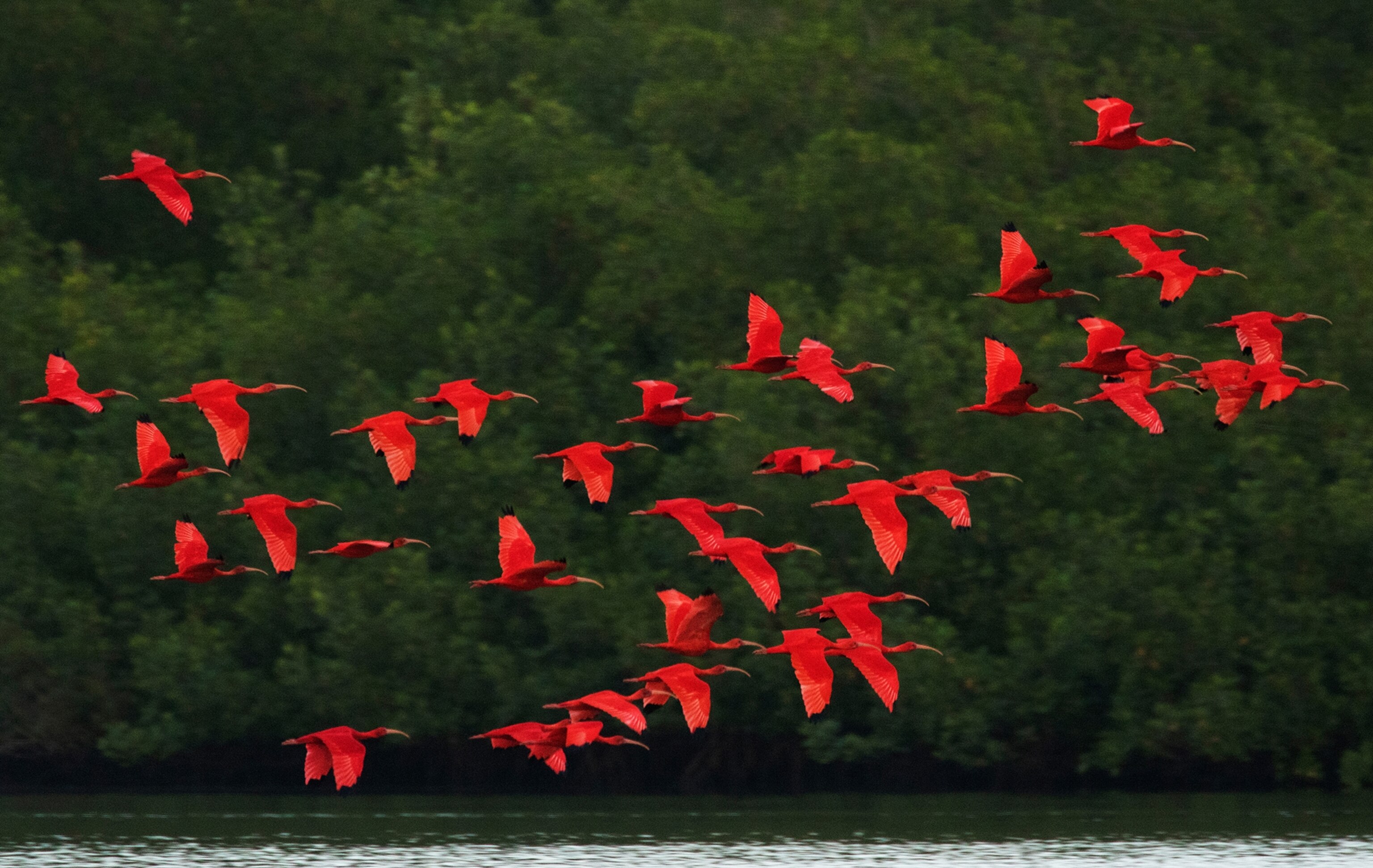
For a place only eight miles from the capital, Caroni Swamp feels improbably remote. The same could be said about Trinidad. Whether by choice or an admirable indifference to touristy imperatives, Trinis have not gone out of their way to make their natural attractions easy to get to. I’m eager to visit Paria Bay, a secluded cove known for a natural stone arch. I could reach it by driving the winding roads into the hilly Northern Range, to road’s end at the village of Brasso Seco, then embark on an hours-long hike. Or I could hire, as I now do, a fishing boat at the coastal village of Las Cuevas, an hour’s drive northeast of Port of Spain. I find a sharp-nosed skiff skippered by Barry; on board is a fisherman named Neil. The sky is cloudy as the boat slaps across rough waters past the hamlet of Blanchisseuse. Neil stands at the prow scanning for rocks and reefs as we wend our way around jutting cays topped by lonely trees.
Tarps strung just behind Paria Beach flag where a handful of families live; otherwise the cove feels deserted. At the far end of the sand I make out a high stone arch buffeted by waves. It’s such a striking spot that just about any country eager for tourist dollars would have paved a road to the water’s edge. But Trinidad has built its economy around its primary resources, oil and gas, not tourism. As one Trinidadian expat I know said, drawing herself up with pride, “We’re a nation, not a tourist destination.”
Which may be why I now have a remarkable place like Paria to myself. I stroll the sand to the arch, known as Cathedral Rock, which, I now see, frames a rock pillar that looks like a pulpit. On the way I keep an eye on the water for leatherback turtles, 10,000 of which cross the Atlantic Ocean every year or two to nest along Trinidad’s beaches in one of the world’s largest leatherback gatherings. They usually begin arriving in March, however, and it’s only February. None cruise by.
Trinidad culture is built around habits of sociability, especially “liming,” a term Trinidadians invented for hanging out. One can “make a lime” anywhere—at a bar, at a park, by the side of the road—anytime. But the essential lime is the weekend river lime.
On a Sunday afternoon I head with guide Gerald Nicholas into the Northern Range, the chain of low mountains that rears up east of the capital. (Opting for a guide is a good idea for first-time visitors to Trinidad; many smaller routes aren’t marked.) Soon we’re on a road following a stream. Through trees, I see families and friends picnicking riverside. Nicholas hollers to a clutch of men in swim trunks, cooking over campfires on a sandbar. They wave us down.
Bindra Singh and his friends greet us with beers icy from the cooler. We shoot the breeze over a boombox blaring chutney soca, the Trini music that mixes pop with Indian rhythms and Hindi lyrics (thousands of Indians came to Trinidad as indentured laborers in the 1900s). “A lime is all about friends and food,” says Singh. They feed their fires driftwood and bits of broken bamboo to heat pots arranged on three river rocks. I ask what’s cooking. “Curry duck and provision soup,” the latter a mix of bananas, peas, peppers, carrots, dasheen (taro), dumplings, and whatever else might be on hand. I get a first bite of the duck, which comes out of the pot as sizzling hot as it is spicy.

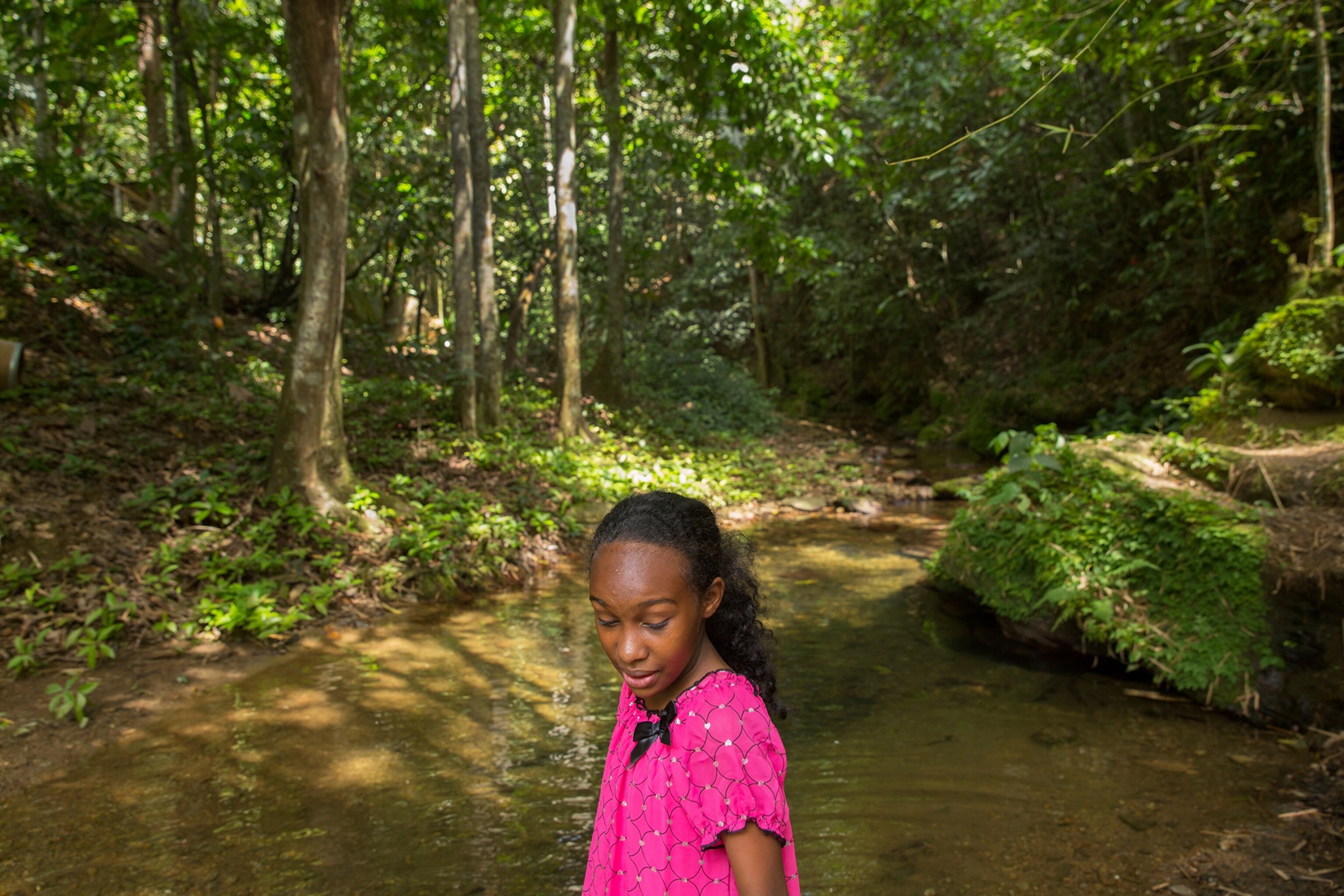
A gaggle of kids splash around downriver as parents lounge along the banks. Other limers plop foldable tables right in the stream, for one cool picnic. A young man wades past with a homemade speargun—a hand-carved gun stock rigged with rubber bands to catapult a sharpened shank of heavy wire. He’s hunting fish for a lime of his own.
Another popular lime is hanging out at a pan yard. A few nights before the Panorama finals are to take place I’m in the pan yard—essentially a paved lot—where the Supernovas Steel Orchestra rehearses in its hometown of Surrey. It’s past 9 p.m. and Supernova musicians are still arriving, many straight from their jobs more than an hour away in Port of Spain. As the players set up, the various sections begin working on their parts. In front sit the high-pitched “tenor” pans that usually carry the melody and the “double tenors” that harmonize with them. To the left are the “guitars,” “cellos,” and larger mid-range pans that “strum” chords under the tenors. On the right sit the oil drums—as many as a dozen per player—that bang out the bass notes like industrial timpani. On a platform in the back is the “engine room,” with drum kit, congas, bongos, and other rhythm instruments.
All are playing their own trickiest bits over and over, a discordant jumble of sound that builds and builds as more players arrive and join in. That is, until three sharp bangs from a cowbell bring instant silence. It’s drill master Sonalal “Killer” Samaroo, who, after a pause, raps out a rhythm that starts the song.
What happens next astounds me.
I’ve heard plenty of steel pan, but always by small groups—a couple of pannists at a party, a pan soloist in a jazz band. But I’d never heard a full steel orchestra perform live, so I am utterly unprepared for the onslaught of sound when more than a hundred pannists strike in sync.
And the Supernovas are very much in sync. Tightly drilled, eager, attentive, they stop and work the hardest sections over and over. The cowbell kicks them off fast. Then they do the part again, this time at a snail’s pace, then once more at just the right tempo.
They’re playing a seven-minute arrangement by Amrit Samaroo, whose father—and Sonalal’s brother—Jit, started a little family steel band as a schoolkid in the countryside and became one of the great pan pioneers. “Everything I learned was from him,” Amrit says.
- National Geographic Expeditions
Plenty of pannists read music fluently, but the tradition remains to learn every note directly from the pan of the arranger. Even now, just days before Panorama, Amrit goes from section to section tweaking the arrangement and showing players new variations, little surprises for the judges come the finals.
This all is wonderfully new to me but old hat to the residents of Surrey. Instead of complaining about the racket—which, after all, has been going on for some two months now, every night until two or three in the morning—the neighbors are out on their porches, liming.
The pan yard where Phase II Pan Groove practices, in an upscale part of Port of Spain, is another experience altogether, brightly lit and billboarded with ads for Yellow Tail Chardonnay. Bleachers teem with the band’s many fans. The players are rehearsing “Madd Music,” a dance tune with a singable melody bouncing over repeating riffs. It’s a happy, easygoing vibe: Where the Supernovas were taut with youthful ambition, Phase II grooves with the relaxed ease one expects of winners.
Relaxed would not be the word to describe the Desperadoes as I watch them rehearse the following night in a borrowed, dimly lit pan yard in a scruffier part of Port of Spain. When their cowbell counts off, it’s an entirely different sound—heavier, darker—that I hear. Despers play pan with a wide-shouldered, muscular swagger, and if the musicians aren’t exactly scowling,I don’t see many gratuitous smiles, either. This is a serious orchestra rehearsal.
During a break I recognize Clement Franklin. We had met earlier in the day at the Gill Pan Shop, where I’d watched craftsmen pound out 55-gallon steel barrels into pans. Clement is a tuner; he works his magic at the end of the pan-making process. Using a small hammer, he shapes the curves of every note on the pan until the intonation rings pitch-perfect. In his hands right now are the rubber-tipped mallets of a pan man. He also, yes, has a smile. “Playing pan with the Desperadoes is what I live for.”
Desperadoes will be the penultimate band to perform at Panorama, so it’s nearly 2 a.m. when they finally take the stage. The Grand Stand crowd hasn’t waned a bit. As the players position their many steel pans, commentators doing a national TV broadcast note how long it has been—a 16-year drought—since Desperadoes came out on top.
Finally, a drummer raps out a rhythm ... and they’re off, with all the ferocity I’d heard in the pan yard a few nights before, performing a piece titled “Different Me.” The pannists—women and men, youths and graybeards—dance rhythmically as they drum, bobbing, lunging, hopping, and twirling, leaning over their pans, wringing music out of steel.
By 3 a.m. the last band has played and the announcer calls out the scores. Third place is a tie, 283 points each for the Renegades and—disappointing their fans—Phase II Pan Groove. Second place, with 284 points, goes to the young hopefuls from Surrey. The Despers fans begin to roar. Desperadoes have finished first—by one point. The band, finally, is beaming.
In an age of world music, where producers scour distant places to capture every sort of indigenous song, there still is music that remains elusive—elusive because recording it can’t come close to reproducing the actual experience of its sounds. This may be nowhere more true than at the Panorama Finals. What I now know: You can’t grasp steel-pan music until you’ve heard a large pan orchestra play live in a pan yard; and you can’t know Trinidad without doing the same.
Writer and musician Eric Felten lives in Washington, D.C., where he leads the Eric Felten Jazz Orchestra. Photographer Aaron Huey recently published the photo book Where the Heaven Flowers Grow: The Life and Art of Leonard Knight.

